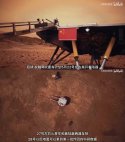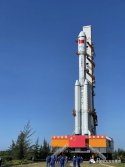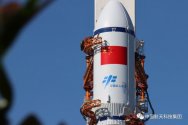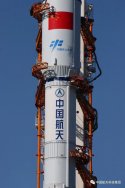You are using an out of date browser. It may not display this or other websites correctly.
You should upgrade or use an alternative browser.
You should upgrade or use an alternative browser.
China's Space Program News Thread
- Thread starter crazyinsane105
- Start date
- Status
- Not open for further replies.
Zhurong will leave the lander at about May 22, Zhurong and the lander take photos for each other at May 27, photos and other data send back to earth at about May 28, or some time later.
View attachment 72119
Right. But the lander should take images of the surround area a lot earlier.
Quickie
Colonel
Sky crane technique
IMO thats a better way for delivering rovers Mars
Here are the details:
No mention of terrain/obstacle avoidance radar/sensor on the Skycrane that would be used during descent in the article. It would be odd indeed if the Skycrane does not employ this critically important radar/sensor during the descent that would allow it to avoid uneven terrain.
Edit:
Just found out that the Skycrane/Rover uses "Terrain-Relative Navigation: Avoiding Tricky Terrain"
This would be avoiding tricky terrain but not so much down to smaller craters and crevices.
Last edited:
What, no one has shared these celebratory photos?
We were wanting for you to do it as you seem to find high resolution photos. I did see one of them but it wasn't worth the effort.
Orbiter is on an elliptical orbit right? Shouldn't China circularize it?
May 17 is when the orbiter enter it's relay orbit.
Are they going to send more relay satellites?
Eventually they will but not by itself. Future orbiters will likely be sent with newer rovers. IIRC, China will sent another one in 2028??? for their sample return mission.
Aerobraking employed by NASA. It uses Mars atmosphere to do the job of orbit capture while CNSA use retro-thruster.Does anyone know of any significant differences to the approach for landing on Mars between CNSA and NASSA?
For the mars sample return mission in 2028, one paper from CNSA suggested to use Aerobraking as well to save fuel due to the much increased mass of the mission. It also suggested to use direct entry for the lander, again to save fuel (mass). Direct entry means that the lander goes straight to the surface without orbiting Mars first. That is something extraordinary.
Engineer
Major
This is actually an interesting question. I don't know, but I speculate no because there are too much to do and too few launch windows to waste on relay satellites.Are they going to send more relay satellites?
Judging by China's approach to its Moon missions, Tianwen 1's backup will become Tianwen 2 and go to Mars. There's no place in the plan for extra orbiters unless China is willing to do a multi-launch mission.
A multi-launch mission would open up more possibilities. On a second rocket, China could send two Tianwen series satellites outfitted with different instruments, or a single much more capable mapping/relay satellite to Mars. Still, what new capabilities would that demonstrate? None that I can see. So, I hope they would go for something far more ambitious.
Here is one possibility. With one launcher carrying an orbiter, the payload of the other rocket could be devoted entirely to the lander. In fact, with that spare capacity, get rid of the rover entirely and put in an ascender. Instead of a pure orbiter, have an orbiter/return capsule combo. Such mission would definately require aerobraing and direct desecend from Mars Transfer Orbit. Aside from these, most of the technologies have already been demonstrated in a Moon mission.
So, worst case scenario is that they get to test some of the technologies required for a sample return mission. Best case scenario is... well, one can dream.
This is actually an interesting question. I don't know, but I speculate no because there are too much to do and too few launch windows to waste on relay satellites.
Judging by China's approach to its Moon missions, Tianwen 1's backup will become Tianwen 2 and go to Mars. There's no place in the plan for extra orbiters unless China is willing to do a multi-launch mission.
A multi-launch mission would open up more possibilities. On a second rocket, China can send two Tianwen series satellites outfitted with different instruments, or a single much more capable mapping/relay satellite to Mars. Still, what new capabilities would that demonstrate? None that I could see. So, I hope they would go for something far more ambitious.
With one launcher carrying an orbiter, the payload of the other rocket could be devoted entirely to the lander. In fact, with that spare capacity, get rid of the rover entirely and put in an ascender. Instead of a pure orbiter, have an orbiter/return capsule combo. Such mission would definately require aerobraing and direct desecend from Mars Transfer Orbit. Aside from these, most of the technologies have already been demonstrated in a Moon mission.
So, worst case scenario is that they get to test some of the technologies required for a sample return mission. Best case scenario is... well, one can dream.
I don’t think there is a backup built for Tianwen1.
I don’t think there is a backup built for Tianwen1.
Yes, not a lot of point, since the launch windows are only a couple of months long and years apart, so plenty of time to sort out a new mission if it failed, IIRC the perseverance launch was delayed by storms, there were concerns about missing the window if the bad weather persisted
because the orbiter needs a week to fly over again. NASA on the other hand already has many relay satellites which is why we quickly see photos from it
I want to make a minor correction for folks. The NASA rovers (at least through Curiosity) do have a direct to earth transmission capability. It's really crappy: 500 bits/s +/-. However, most of the data flows through the orbiters around Mars: they give better coverage back to earth and higher bandwidth.
China could have put in an equivalent of a DSN link for the rover and lander. It would have been really helpful to do so, both for descent and landing confirmation. If there was a set of engineering cameras, they could have used that to squeeze something through to Earth. There are too many ifs there and I would be speculating whether they did, did not, did not use the link for engineering data, or choosing not to use it for sending back a basic picture.
Some are starting to say, "pix or it didn't happen." That's stupidly premature. Many people (not here) are forgetting ESA did not release imagery and data very fast at all for the Huygens probe on Titan. NASA operates one way. The rest of the world does not and does not have to. There are also a lot of scenarios where the lander/rover might have a small glitch and has gone into whatever CNSA has for 'safe mode.' It happens to NASA - that has been doing space exploration for 60 years now! - semi regularly. Hullo, Ingenuity!
CNSA successfully landed multiple rovers on the Moon. While Mars is different and more challenging than the Moon, CNSA has more than enough experience to pull this off and folks need to *$@#ing chill
If we don't see anything in a couple weeks, then I'll start doubting. Until then, CNSA has at least my benefit of a doubt.
- Status
- Not open for further replies.




